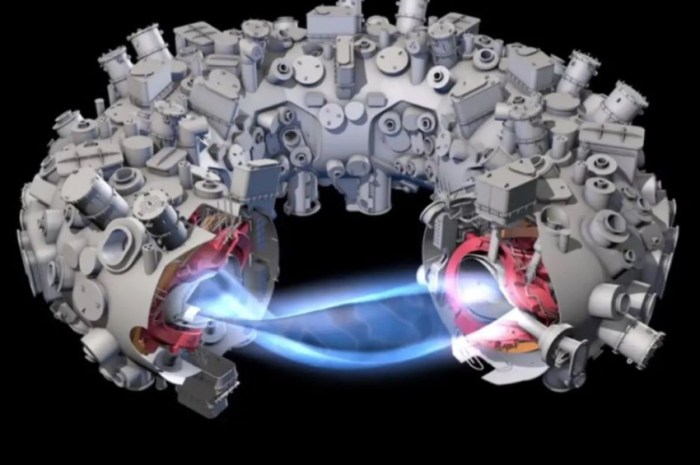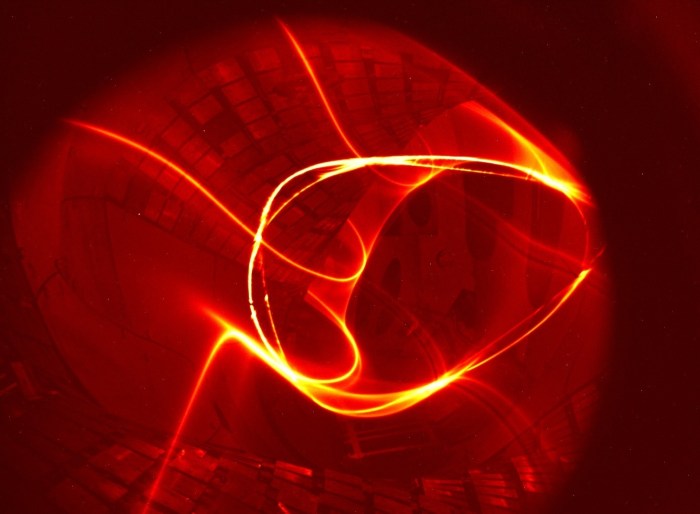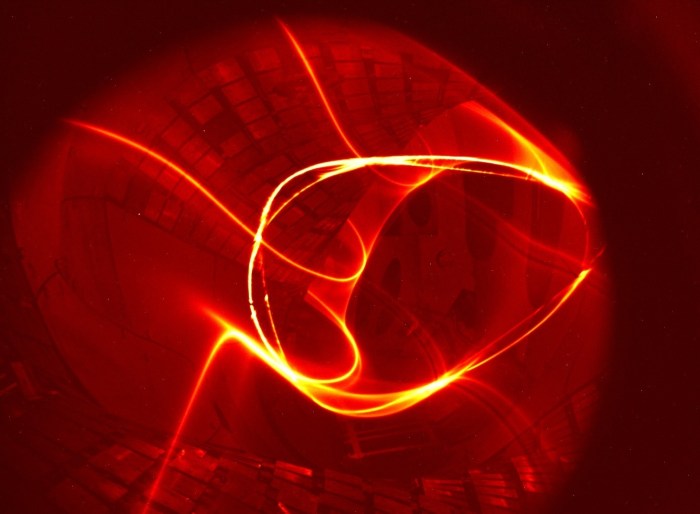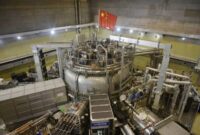German startup Max Planck Proxima Fusion Stellarator is making waves in the world of energy. This ambitious project, backed by the renowned Max Planck Institute for Plasma Physics (IPP), aims to harness the power of fusion, a clean and nearly limitless energy source.
The Proxima stellarator, a unique type of fusion reactor, represents a bold leap forward in this field, pushing the boundaries of scientific exploration and promising a brighter future for energy production.
The IPP, with its decades of experience in plasma physics and fusion research, has been instrumental in developing the stellarator concept. This technology, which uses complex magnetic fields to confine and heat plasma, offers advantages over traditional tokamaks, particularly in terms of stability and control.
The Proxima stellarator, designed with innovative features, seeks to overcome some of the challenges faced by previous stellarators, potentially paving the way for a new generation of fusion reactors.
Max Planck Institute for Plasma Physics (IPP)

The Max Planck Institute for Plasma Physics (IPP) is a world-renowned research institution dedicated to the exploration of plasma physics and the development of fusion energy. Established in 1958, the IPP has played a pivotal role in advancing our understanding of plasma behavior and pushing the boundaries of fusion research.
History and Mission
The IPP was founded in 1958 as part of the Max Planck Society, a prestigious German research organization. Its mission is to conduct fundamental research in plasma physics, with a particular focus on the development of fusion energy as a safe, clean, and sustainable source of power.
Research Focus
The IPP’s research activities encompass a wide range of areas, including:
- Fusion Energy:The IPP is actively involved in the development of fusion energy technologies, aiming to harness the power of nuclear fusion reactions for electricity generation. Fusion energy is considered a promising solution to the world’s energy challenges, as it is inherently safe, clean, and sustainable.
- Plasma Physics:The IPP conducts fundamental research in plasma physics, investigating the behavior of ionized gases under extreme conditions. Understanding the properties and dynamics of plasmas is essential for developing fusion energy technologies and for applications in other fields, such as astrophysics and materials science.
Understand how the union of sustainable wearables could be powered by myceliotronics mushroom batteries can improve efficiency and productivity.
- Stellarator Concept:The IPP is a leading center for the development and research of the stellarator concept, a type of magnetic confinement fusion device. Stellarators are characterized by their complex magnetic field configurations, which aim to confine the hot plasma and prevent it from touching the reactor walls.
Role in Stellarator Development
The IPP has played a significant role in the development of the stellarator concept. Its researchers have made groundbreaking contributions to the theoretical understanding of stellarator physics, the design and construction of stellarator devices, and the experimental investigation of plasma behavior in these devices.
The IPP’s stellarator research program has produced some of the most advanced stellarator devices in the world, including the Wendelstein 7-X, which is currently the largest and most complex stellarator ever built.
The IPP’s contributions to the stellarator concept have been instrumental in advancing the field of fusion energy research and have paved the way for future developments in this promising energy technology.
Stellarator Technology
Stellarators are a type of fusion reactor that uses a complex magnetic field configuration to confine hot, ionized plasma, the fuel for fusion reactions. They offer a promising alternative to tokamaks, the more common type of fusion reactor.
Stellarator Magnetic Field Configuration
Stellarators utilize a unique and complex magnetic field configuration to confine plasma. This configuration is created by a combination of external coils and internal magnetic fields. The magnetic field lines in a stellarator are twisted and shaped to form a three-dimensional helical structure.
This helical structure helps to prevent the plasma from escaping the confinement region.
The magnetic field lines in a stellarator are twisted and shaped to form a three-dimensional helical structure.
The complex magnetic field configuration in stellarators is designed to address a key challenge in magnetic confinement fusion: the formation of magnetic islands, which can disrupt the plasma confinement. These islands are formed due to imperfections in the magnetic field, which can allow plasma to escape.
Stellarators aim to mitigate this issue by creating a magnetic field that is intrinsically more stable and less prone to the formation of magnetic islands.
Comparison of Stellarators and Tokamaks, German startup max planck proxima fusion stellarator
Stellarators and tokamaks are both magnetic confinement fusion devices, but they differ in their magnetic field configurations and operational principles.
Advantages of Stellarators
- Steady-state operation:Stellarators can theoretically operate in a steady-state mode, meaning they can continuously produce fusion power without the need for periodic disruptions or pulsed operation. This is a significant advantage over tokamaks, which typically operate in pulsed mode, with short bursts of fusion power.
- Improved plasma stability:The complex magnetic field configuration in stellarators can help to improve plasma stability, reducing the risk of disruptions and making it easier to control the plasma. This is particularly important for achieving sustained fusion reactions.
- No need for plasma current:Unlike tokamaks, which rely on a strong plasma current to create and maintain their magnetic field, stellarators do not require a plasma current. This eliminates the need for complex current drive systems and reduces the potential for instabilities associated with plasma current.
Disadvantages of Stellarators
- Complex design:Stellarators are significantly more complex to design and build than tokamaks, due to their intricate magnetic field configuration. This complexity can lead to higher construction costs and longer development times.
- Limited experimental data:Compared to tokamaks, which have been studied extensively for decades, stellarators have a relatively limited experimental database. This makes it more challenging to optimize their design and predict their performance.
Current Stellarator Research Projects
- Wendelstein 7-X (W7-X):Located in Greifswald, Germany, W7-X is the world’s largest operational stellarator. It is a major research facility that aims to demonstrate the feasibility of stellarator fusion.
- Heliotron J:Located in Japan, Heliotron J is another large stellarator research facility that has been operational for several decades. It has played a crucial role in advancing stellarator research and developing new technologies.
- National Compact Stellarator Experiment (NCSX):This was a stellarator project in the United States that aimed to develop a compact and efficient stellarator design. Although the project was ultimately canceled, it made significant contributions to the field of stellarator research.
Proxima Fusion Stellarator: German Startup Max Planck Proxima Fusion Stellarator
The Proxima Fusion Stellarator is a new, compact, and innovative fusion device currently under development at the Max Planck Institute for Plasma Physics (IPP) in Germany. It is designed to explore the potential of stellarators for achieving sustainable fusion energy.
Design and Specifications
The Proxima stellarator is a unique device with a distinctive design that differentiates it from other stellarators. It features a helical magnetic field configuration that confines the hot plasma, which is a key element for achieving fusion.
- Proxima is a “helical” stellarator, meaning it uses a set of twisted coils to generate a magnetic field that confines the hot plasma. This design allows for more flexibility in shaping the magnetic field compared to conventional stellarators.
- The device is relatively small, with a major radius of 1.1 meters and a minor radius of 0.2 meters. This compact design makes it cost-effective and allows for faster construction and operation.
- Proxima will operate with a plasma current of up to 1 MA and a magnetic field of up to 2 Tesla. This will allow for the study of high-performance plasma regimes and the development of advanced heating and current drive systems.
Key Features
The Proxima stellarator offers several key features that distinguish it from other stellarators:
- Advanced magnetic field configuration:The unique helical coil design allows for a more complex and optimized magnetic field configuration, which is essential for achieving high plasma confinement and stability. This design is based on the “quasi-axisymmetric” concept, which aims to reduce the inherent magnetic field distortions found in conventional stellarators.
- Compact size and cost-effectiveness:The smaller size of Proxima compared to other stellarators makes it significantly more cost-effective to build and operate. This is crucial for enabling research and development in fusion energy, which is a very expensive field.
- High-performance plasma operation:Proxima is designed to operate with high plasma currents and magnetic fields, allowing for the study of high-performance plasma regimes relevant to future fusion power plants.
Scientific Goals and Potential Applications
The Proxima project aims to address several key scientific challenges in fusion energy research:
- Plasma confinement:Proxima will be used to study the confinement properties of high-performance plasmas in a stellarator configuration. This includes investigating the impact of the magnetic field configuration on plasma stability and transport.
- Heating and current drive:The device will be used to develop and test advanced heating and current drive systems, which are essential for achieving high plasma temperatures and sustaining fusion reactions.
- Fusion power production:While Proxima is not designed to produce significant fusion power, it will provide valuable data and insights into the feasibility of stellarators for future fusion power plants. This includes exploring the potential of using stellarators to achieve a net energy gain from fusion reactions.
Startup Ecosystem in Germany
Germany, a nation known for its robust engineering and scientific prowess, is witnessing a burgeoning startup ecosystem, particularly in the field of fusion energy. The country boasts a rich history of research and development in plasma physics, with institutions like the Max Planck Institute for Plasma Physics (IPP) leading the way.
Key Players and Initiatives
Germany has a strong network of institutions, investors, and initiatives supporting fusion startups.
- Max Planck Institute for Plasma Physics (IPP):IPP is a leading research institution in plasma physics, actively engaged in developing fusion technologies. IPP has a strong focus on stellarator research and has been instrumental in the development of the Proxima project.
- German Aerospace Center (DLR):DLR is another major player in the German fusion research landscape, contributing to the development of technologies and infrastructure for fusion energy.
- Helmholtz Association of German Research Centres:The Helmholtz Association, a network of national research centers, plays a significant role in supporting fusion research, including through its collaboration with IPP.
- High-Tech Gründerfonds (HTGF):HTGF is a prominent venture capital firm focusing on technology-driven startups, including those in the field of fusion energy. HTGF has invested in several fusion startups, providing funding and support for their development.
- German Federal Ministry for Economic Affairs and Climate Action (BMWK):The BMWK provides funding and support for research and development in fusion energy, contributing to the growth of the German fusion startup ecosystem.
Impact of the Proxima Project
The Proxima project, a private-public partnership aimed at developing a compact, high-performance stellarator fusion reactor, has the potential to significantly impact the German startup landscape.
- Attracting Talent and Investment:Proxima’s ambition and potential for success are attracting top talent and investment from both within and outside Germany, bolstering the fusion startup ecosystem.
- Spin-offs and Innovation:The project is expected to spawn a wave of spin-off companies, leveraging the technologies and expertise developed for Proxima. This will foster innovation and entrepreneurship in related fields, such as advanced materials, robotics, and data analytics.
- Boosting the German Economy:The development of fusion energy holds immense potential for economic growth, creating jobs and boosting the German economy. The Proxima project is poised to play a crucial role in this development, attracting investments and stimulating innovation.
Challenges and Opportunities

Fusion energy, the power source of the stars, holds immense promise for a sustainable and clean energy future. However, achieving this goal requires overcoming significant technological hurdles. The development of stellarator technology, a magnetic confinement approach to fusion, presents unique challenges and opportunities.
Challenges in Stellarator Development
The pursuit of fusion energy through stellarators faces several challenges:
- Complex Magnetic Field Design:Stellarators require intricate magnetic field configurations to confine the hot plasma. Designing and building these complex coils is a demanding engineering task.
- Plasma Instabilities:Stellarators are susceptible to plasma instabilities, which can disrupt the fusion process. Understanding and mitigating these instabilities is crucial for achieving stable and sustained fusion reactions.
- High-Performance Plasma Confinement:Stellarators need to confine the plasma at extremely high temperatures and densities for sustained fusion. Achieving this requires sophisticated control systems and advanced materials.
- Economic Feasibility:The high cost of building and operating stellarator devices is a major obstacle to their widespread adoption. Research and development efforts are focused on reducing these costs and improving efficiency.
Opportunities of Successful Fusion Research
Despite these challenges, the potential benefits of successful fusion research are substantial:
- Clean Energy Source:Fusion power plants would generate electricity without producing greenhouse gases or other harmful emissions, offering a clean and sustainable alternative to fossil fuels.
- Abundant Fuel Source:Fusion reactions use deuterium and tritium, which are abundant isotopes of hydrogen. This ensures a nearly inexhaustible fuel supply for future energy needs.
- Scientific Advancement:Fusion research pushes the boundaries of scientific knowledge, leading to breakthroughs in plasma physics, materials science, and engineering.
- Economic Growth:The development and deployment of fusion technology could create new industries and jobs, stimulating economic growth and innovation.





